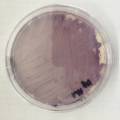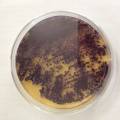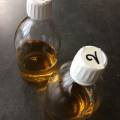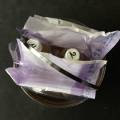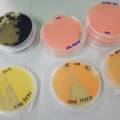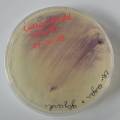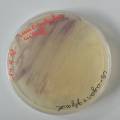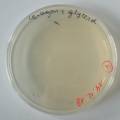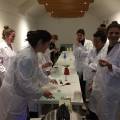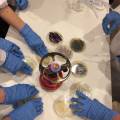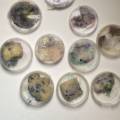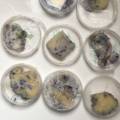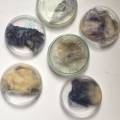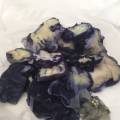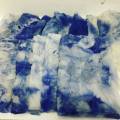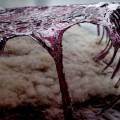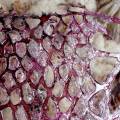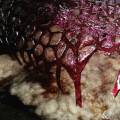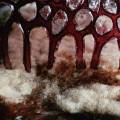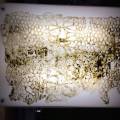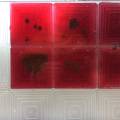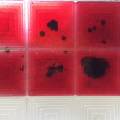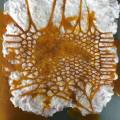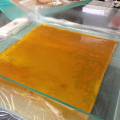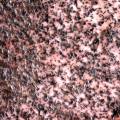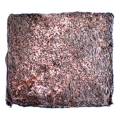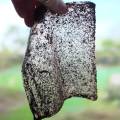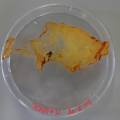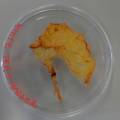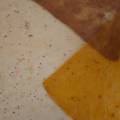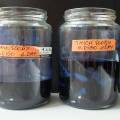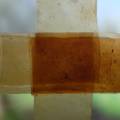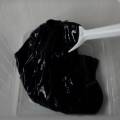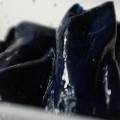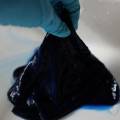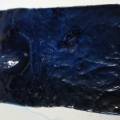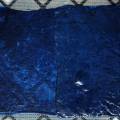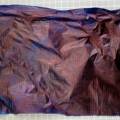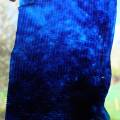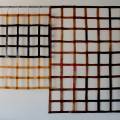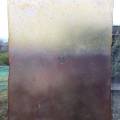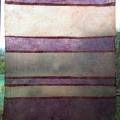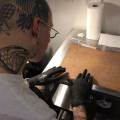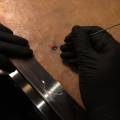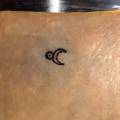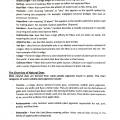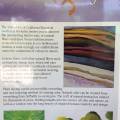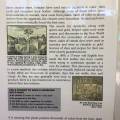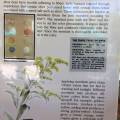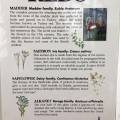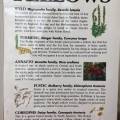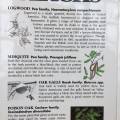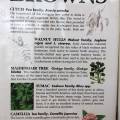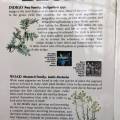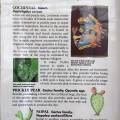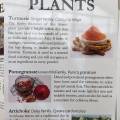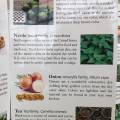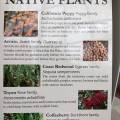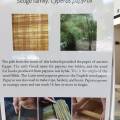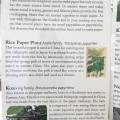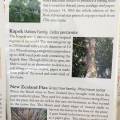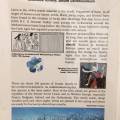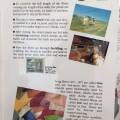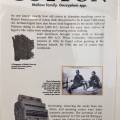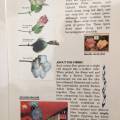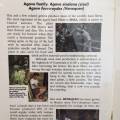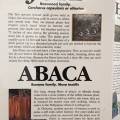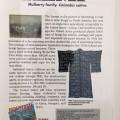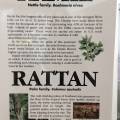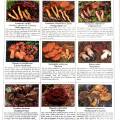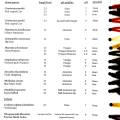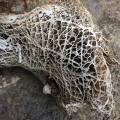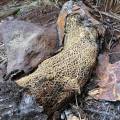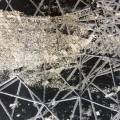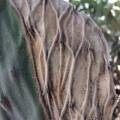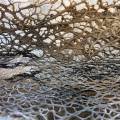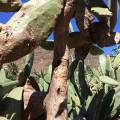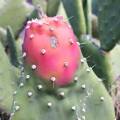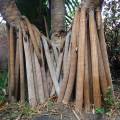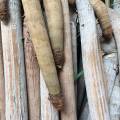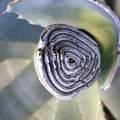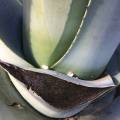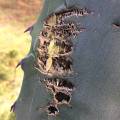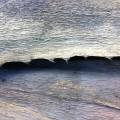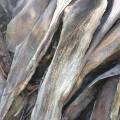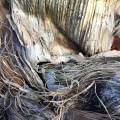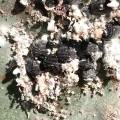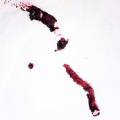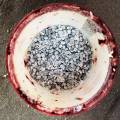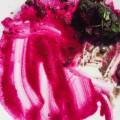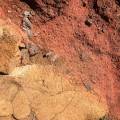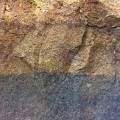This is an old revision of the document!
Table of Contents
dyeing with Bacteria and Natural Dyes
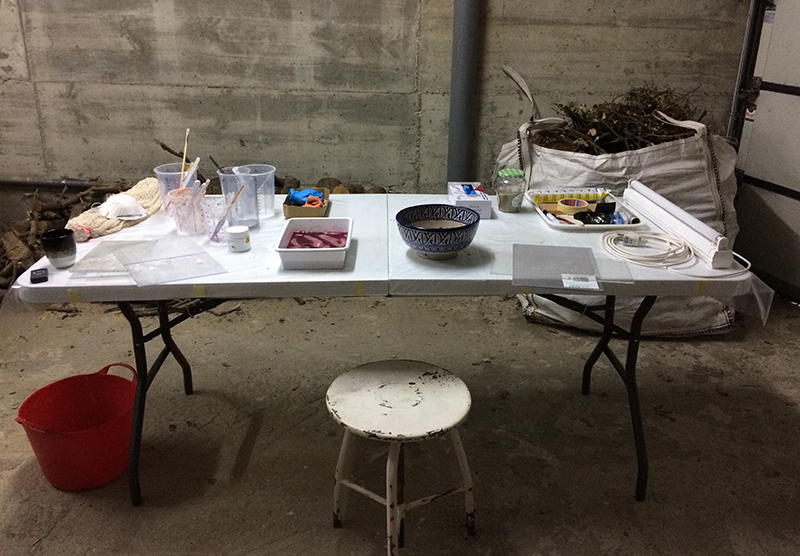

My Lab at Collserola - dye workspace. Avocado dye and Cochineal dye.
RECENT POSTS ON TOP OF THE PAGE
dyeing with Janthinobacterium lividum on microbial skins
LB Medium (250ml gedemineraliseerd water; 6,25gr LB powder; 4gr glycerine; mengen en autoclaven).
Optimum growing conditions for Janthinobacterium: 25°C.
Glycerine is enhancing the growth of Janthinobacterium; Glucose is inhibiting the growth.
Bacteria on sterilized cellulose skin (grote petri-schalen): 1ste poging (met gesterelizeerde skins) is mislukt - kan ook liggen aan slecht groeimedium. 2de poging (LB met glycerine en nieuwe inoculatie van bacteria) is in wording.
Nieuwe test met kleine petri schalen en kleine stukken cellulose skin: teststukjes cellulose skin zo 'steriel' mogelijk gemaakt zonder ze te autoclaven (heet water, houden boven stoom). Meeste vocht uit de skin laten opdrogen. Daarna de skins goed bevochtigen met LB medium mét glycerine, en inoculeren met Janthinobacterium lividum.
Bacteria on sterilized white cotton fabric: katoen ge-autoclaved en bacteria onder steriele omstandigheden geinoculeerd. Na 2 dagen resultaat, blauwe tekening.
workshop bioshades Barcelona - 15/3/2018
dyeing with bacteria
- ±50×50 cm of silk chiffon or ready to dye cotton fabric
- Janthinobacterium lividum
- glycerine (a couple of drops)
- alcohol
- LB broth (lennox)
- petri dishes
- inoculator loop
- camping gas+holder
- incubator
- gloves
- autoclave bags for sterilisation
- 500 ml glass bottle with lid
- cooking stove
- pressure cooker / autoclave
Bacteria killing:
- Attached the step by step procedure to inoculate new plates but also growing them on textiles.
- How to make the medium if you don't have it ready made: http://biohackacademy.github.io/bha4/cultivation-media/nutrient-agar/
- To kill the bacteria after use: * wear gloves * take all textiles out of petri dishes and place them in an autoclave bag * take all petri dishes and place them into a bag * put enough water in the pressure cooker, if you use the same pressure cooker i guess ±10 cm * close it, boil 10 min * turn it off leaving pot closed until the steam is gone * throw away autoclave bag with petri dishes * wash all the textiles with washing up liquid
http://wiki.textile-academy.org/bootcamp2017bcn/handson/textilebacteria
bioplastics
Working with molds (silicone, pos/neg)
Different flexibilities ⇒
- geel vierkant: 2000ml water/ 400gr gelatine/ 350gr glycerine
- rose/hibiscus met gouden glitters in lasercut mold (vierkantjes): 250ml water/ 50gr gelatine/ 25gr glycerine
Reinforcement with fabric or fibers (geel vierkant)
Drying time (geel vierkant: 10 dagen)
Organic coloring and other additives
bioplastics_dyes
organic dyes
Madder
Alkanet
Indigo
Kurkuma
Hibiscus
Campèche
Methods of coloring (in growth medium or coloring after growing)
Drying methods (open air, oven, …)
Protection (coconut oil, Ricinus oil, bees wax, …)
tattooing skins
Different experiments with tattooing on wet and dry skin.
Handpoked tattoo with vegetal ink
Experimental needle tattoo with self-made indigo ink
Writing with watercolour marker
natuurlijke kleurstoffen
Anatto (E160b): een rood tot rood-bruine kleurstof gewonnen uit de orleaanboom
Anthocyaan (E163): een paarsrode kleurstof
Astaxanthine (E161j): een roze kleurstof uit zalm, garnaal, kreeft, krab, flamingoveren
Betanine (E162): een rode kleurstof gewonnen uit de rode biet
Capsanthine (E160c): een rode kleurstof gewonnen uit de rode paprika
Caroteen (E160a): een oranje kleurstof gewonnen uit de peen en zoete aardappel
Citranaxanthine (E161i): een oranje kleurstof gewonnen uit onder andere maïs en saffraankrokus
Curcumine (E100): een gele kleurstof
Flavoxanthine (E161a): een gele kleurstof gewonnen uit onder andere de boterbloem
Luteïne (E161b): een gele kleurstof
Lycopeen (E160d): een helderrode kleurstof zit in watermeloen, tomaat, rozenbottel
Violaxanthine (E161e): een oranje kleurstof die voorkomt in viooltjes
Zeaxanthine (E161h): een oranje kleurstof
Amarant: een rode kleurstof gewonnen uit de plantensoorten van het geslacht Amarant
Saffraan: een oranjerode kleurstof gewonnen uit de saffraankrokus
Saffloer (goedkope saffraan): een gele en rode kleurstof gewonnen uit de bloemen van de saffloer
Alizarine: een rode kleurstof gewonnen uit de meekrapplant
Indigo: een blauwe kleur gewonnen uit onder andere plantensoorten van het geslacht Indigofera en wede
Luteoline: een gele kleurstof gewonnen uit planten van de Resedafamilie
Saffraan: een oranjerode kleurstof gewonnen uit de saffraankrokus
Purper gewonnen uit de purperslak
Canthaxantine vroeger gewonnen uit veren van flamingo's en kreeften. Nu uit cantharellen of gesynthetiseerd uit beta-caroteen.
https://nl.wikipedia.org/wiki/Natuurlijke_kleurstof
the basics about vegetal dyes
exhibition at the Berkeley Botanical Garden, Farbes and Fibers:
More info:
Mushrooms and Lychen
mushrooms for color
plantaardigheden-verfplanten
wikipedia-verfplanten
natuurlijke kleurstoffen
learning from nature: structures (Opuntia ficus-indica - fig cactus)
Cacti are good crops for dry areas because they efficiently convert water into biomass. As Opuntia species grow in semi-arid environments, the main limiting factor in their environment is water. They have developed a number of adaptations to dry conditions, notably succulence. The perennial shrub Opuntia ficus-indica can grow up to 3-5m height, with thick, succulent and oblong to spatulate stems called cladodes. It has a water-repellent and sun-reflecting waxy epidermis and thorns for leaves.O. ficus-indica (as well as other species in Opuntia and Nopalea) is cultivated in nopalries to serve as a host plant for cochineal insects, which produce desirable red and purple dyes, a practice dating to the pre-Columbian era. DNA analysis indicated O. ficus-indica was domesticated from Opuntia species native to central Mexico. The Codex Mendoza, and other early sources, show Opuntia cladodes, as well as cochineal dye (which needs cultivated Opuntia), in Aztec tribute rolls.[citation needed] The plant spread to many parts of the Americas in pre-Columbian times, and since Columbus, have spread to many parts of the world, especially the Mediterranean, where they have become naturalized.
(edited from Wikipedia)
learning from nature: more structures
learning from nature: fibers
learning from nature: natural colors
dyeing with algae
algae workshop De Waag: dyes_and_colorants_from_algae

